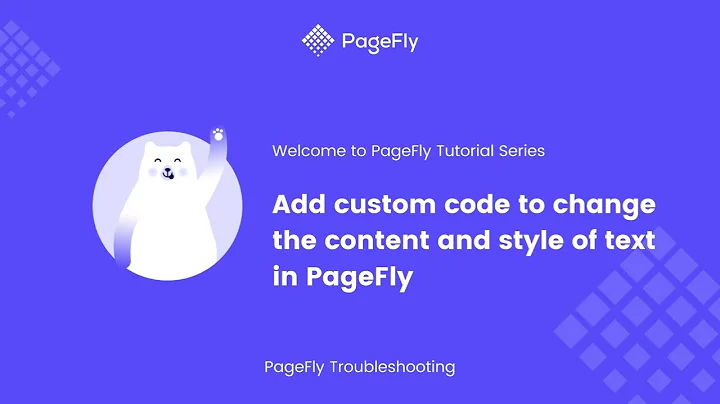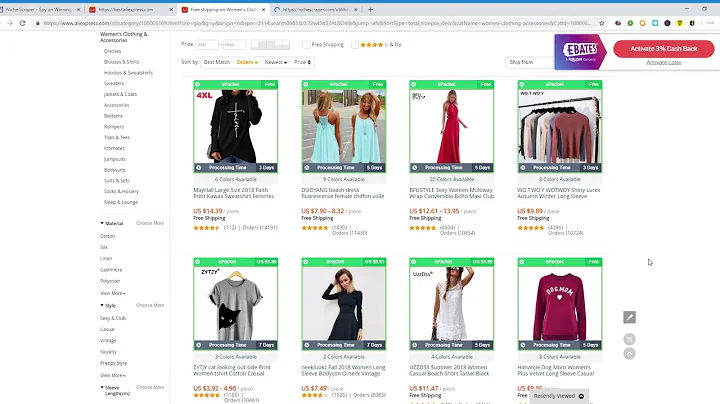Boost Your Online Presence with SEO-Optimized Content
Table of Contents
- Introduction
- The Importance of SEO in Content Writing
- Understanding Perplexity and Burstiness in Writing
- Creating Engaging and Informative Content
- The Power of Headings in Organizing Content
- Writing in a Conversational Style
- The Use of Rhetorical Questions and Analogies
- Incorporating SEO Techniques in Writing
- Pros and Cons of SEO-Optimized Content
- The Future of Content Writing and SEO
The Importance of SEO in Content Writing
In today's digital landscape, having a strong online presence is essential for businesses to thrive. One of the key components of building a successful online presence is through search engine optimization (SEO). SEO involves optimizing your website and content to rank higher in search engine results pages (SERPs), thus increasing your visibility to potential customers.
When it comes to content writing, SEO plays a crucial role in attracting organic traffic to your website. By incorporating relevant keywords, optimizing meta tags, creating valuable backlinks, and following SEO best practices, you can improve your website's visibility and drive more organic traffic.
However, simply stuffing your content with keywords won't cut it anymore. Search engines are constantly evolving, and they're getting better at understanding user intent and delivering high-quality content. This means that as a content writer, your focus should be on creating valuable, informative, and engaging content that not only ranks well but also keeps your readers coming back for more.
Understanding Perplexity and Burstiness in Writing
In the world of content writing, two key concepts that often come into play are perplexity and burstiness. These concepts are related to the variation and distribution of words in a text and can greatly impact the quality of your content.
Perplexity refers to the level of uncertainty or unpredictability in a text. When writing content, it's important to strike a balance between using familiar language that is easily understood by readers and incorporating unique and engaging elements to keep them interested. By using a mix of common and uncommon words, you can maintain a level of perplexity that keeps readers engaged without overwhelming them.
Burstiness, on the other hand, refers to the distribution of word frequencies in a text. In content writing, it's important to avoid being too predictable or repetitive. This means avoiding using the same words or phrases over and over again, as it can make your content appear boring or unoriginal. Instead, focus on varying your vocabulary and using synonyms and alternative expressions to keep your content fresh and interesting.
By understanding and balancing perplexity and burstiness in your writing, you can create content that captures readers' attention and keeps them engaged throughout.
Creating Engaging and Informative Content
When it comes to content writing, one of the most important goals is to create engaging and informative content that captivates your audience. Whether you're writing a blog post, an article, or a web page, your content should provide value to your readers and keep them coming back for more.
To create engaging and informative content, it's important to understand your target audience. Who are they, what are their pain points, and what are they looking for? By answering these questions, you can tailor your content to meet their needs and provide the information they're seeking.
Additionally, use storytelling techniques to make your content more relatable and engaging. Tell personal anecdotes, use examples, and create a narrative that hooks your readers from the start. By incorporating storytelling elements, you can make your content more memorable and increase its impact.
Furthermore, use visuals such as images, videos, and infographics to enhance your content. Visuals not only help break up text and make it more visually appealing, but they also provide additional information and context to your readers. This can further enhance their understanding and engagement with your content.
Lastly, make sure your content is well-structured and easy to read. Use headings, subheadings, and bullet points to break up text and make it scannable. This not only improves readability but also allows readers to quickly find the information they're looking for. Additionally, use a conversational tone and avoid using jargon or technical terms that may confuse or alienate your audience.
By incorporating these strategies, you can create content that is both engaging and informative, keeping your readers hooked from start to finish.
The Power of Headings in Organizing Content
Headings play a crucial role in organizing and structuring your content. They not only help break up text and make it more readable but also guide readers through the main points of your content.
When creating headings, it's important to use descriptive and keyword-rich phrases that accurately reflect the content they introduce. This not only helps readers quickly understand what a section is about but also improves the SEO of your content by including relevant keywords.
Furthermore, use a hierarchical structure for your headings, starting with the main heading (H1) and using subheadings (H2, H3) to further break down the content. This not only provides a clear structure for your content but also enhances its scannability and readability.
In addition to using headings for organizational purposes, you can also use them to create interest and intrigue. Consider using headings that evoke curiosity or pose a question to entice readers to continue reading. By using headings strategically, you can create a more engaging and captivating reading experience for your audience.
Writing in a Conversational Style
When it comes to content writing, adopting a conversational style can greatly improve the readability and engagement of your content. Writing in a conversational tone helps establish a connection with your readers, making them feel like they're having a conversation with a trusted friend or advisor.
To write in a conversational style, use personal pronouns (such as "you," "we," and "I") to address your readers directly. This helps create a sense of intimacy and makes your content feel more relatable. Additionally, keep your sentences and paragraphs short and concise, as this mimics the natural flow of conversation and makes your content easier to understand.
Furthermore, use active voice instead of passive voice to make your writing more dynamic and engaging. Active voice not only adds clarity to your sentences but also makes your content feel more immediate and personal.
Lastly, incorporate rhetorical questions to engage your readers and encourage them to think about the topic at hand. Rhetorical questions can create a sense of curiosity and anticipation, drawing readers further into your content.
By writing in a conversational style, you can create content that is more engaging, relatable, and enjoyable to read.
The Use of Rhetorical Questions and Analogies
To enhance the engagement and impact of your content, consider using rhetorical questions and analogies. These literary devices can help make your content more thought-provoking and memorable.
Rhetorical questions are questions that are not meant to be answered directly, but rather to provoke thought and engage the reader. They can create a sense of curiosity and intrigue, encouraging readers to think about the topic at hand and draw their own conclusions. By posing rhetorical questions throughout your content, you can stimulate critical thinking and create a more interactive reading experience.
Analogies, on the other hand, are comparisons that help illustrate a concept or clarify a complex idea. By relating something abstract or unfamiliar to something more concrete or familiar, analogies can make your content more relatable and easier to understand. Analogies help readers make connections and draw parallels, which can enhance their comprehension and engagement.
When using rhetorical questions and analogies, it's important to ensure they are relevant and add value to your content. Avoid using them for the sake of being clever or catchy, as they may become distracting or confusing. Instead, use them strategically to reinforce key points and make your content more impactful.
Incorporating SEO Techniques in Writing
When writing content, it's important to incorporate SEO techniques to increase your visibility in search engine results pages (SERPs) and drive organic traffic to your website. By following SEO best practices, you can improve your chances of ranking higher and attracting more visitors.
One of the key aspects of SEO is keyword research. By identifying relevant keywords and integrating them naturally into your content, you can increase your chances of ranking for those terms. However, it's important to strike a balance and avoid keyword stuffing, as this can actually harm your rankings.
In addition to keywords, optimize your meta tags, including the title tag and meta description. These tags provide a concise summary of your content and can influence click-through rates from search engine results. By including relevant keywords and compelling descriptions, you can attract more clicks and increase your organic traffic.
Furthermore, focus on creating high-quality backlinks to your content. Backlinks are links from other websites that point to your content, and they are a key factor in search engine algorithms. By incorporating a backlink strategy into your content marketing efforts, you can improve your website's authority and visibility in SERPs.
Additionally, ensure your content is well-structured and easy to navigate. Use headings, subheadings, and bullet points to break up text and make it scannable. This not only improves readability but also helps search engines understand the structure and context of your content.
By incorporating these SEO techniques into your writing, you can improve your website's visibility and attract more organic traffic.
Pros and Cons of SEO-Optimized Content
Like any strategy or approach, there are pros and cons to optimizing your content for SEO. Understanding these can help you make informed decisions about how to approach your content creation and marketing efforts.
Pros of SEO-Optimized Content:
-
Increased visibility: By optimizing your content for SEO, you increase your chances of ranking higher in search engine results. This can lead to increased visibility and exposure to a wider audience.
-
More organic traffic: Higher rankings in search engine results can drive more organic traffic to your website. Organic traffic is more likely to convert into leads or customers, making it an important source of revenue.
-
Improved user experience: SEO-optimized content often focuses on providing valuable and relevant information to users. This enhances the user experience and can lead to increased engagement and loyalty.
-
Long-term results: SEO is a long-term strategy that can provide lasting results. Once your content starts ranking well, it can continue to attract organic traffic and generate leads or sales over time.
Cons of SEO-Optimized Content:
-
Time-consuming: Optimizing content for SEO requires time and effort. Keyword research, on-page optimization, and link building can be time-consuming tasks that require ongoing attention.
-
Constant algorithm changes: Search engine algorithms are constantly evolving, which means that SEO best practices may change over time. Staying up-to-date with algorithm changes and adjusting your strategy accordingly can be challenging.
-
Competitive landscape: Depending on your industry, competition for top search engine rankings can be fierce. Ranking well for highly competitive keywords may require significant resources and investment.
-
Potential for keyword stuffing: While incorporating keywords is important for SEO, overusing them can result in keyword stuffing. This can harm the readability and quality of your content, leading to a negative user experience.
Despite these potential drawbacks, SEO-optimized content remains a valuable strategy for improving your online visibility and driving organic traffic. By carefully balancing SEO techniques with high-quality, valuable content, you can maximize the benefits and minimize the drawbacks.
The Future of Content Writing and SEO
As technology continues to evolve and search engines become more sophisticated, the future of content writing and SEO holds promising opportunities. Here are a few trends and developments to keep an eye on:
-
Voice search optimization: With the rise of voice assistants such as Siri and Alexa, optimizing content for voice search is becoming increasingly important. This involves understanding how people use voice search and creating content that aligns with their queries and search intent.
-
Mobile-first indexing: As more people access the internet through mobile devices, search engines are prioritizing mobile-optimized websites. Ensuring your content is mobile-friendly and loads quickly on mobile devices will become crucial for SEO success.
-
User experience and engagement metrics: Search engines are placing more emphasis on user experience and engagement metrics when determining search rankings. Factors such as page load speed, time on page, and bounce rate will play an increasingly important role in SEO.
-
AI-powered content creation: Artificial intelligence (AI) technology is revolutionizing content creation. AI tools can generate high-quality content, optimize SEO, and even personalize content for individual users. Integrating AI into content writing workflows can streamline processes and enhance productivity.
These are just a few examples of how the future of content writing and SEO is evolving. Staying up to date with the latest trends and developments in the industry will help you adapt your content strategy and ensure long-term success.






















